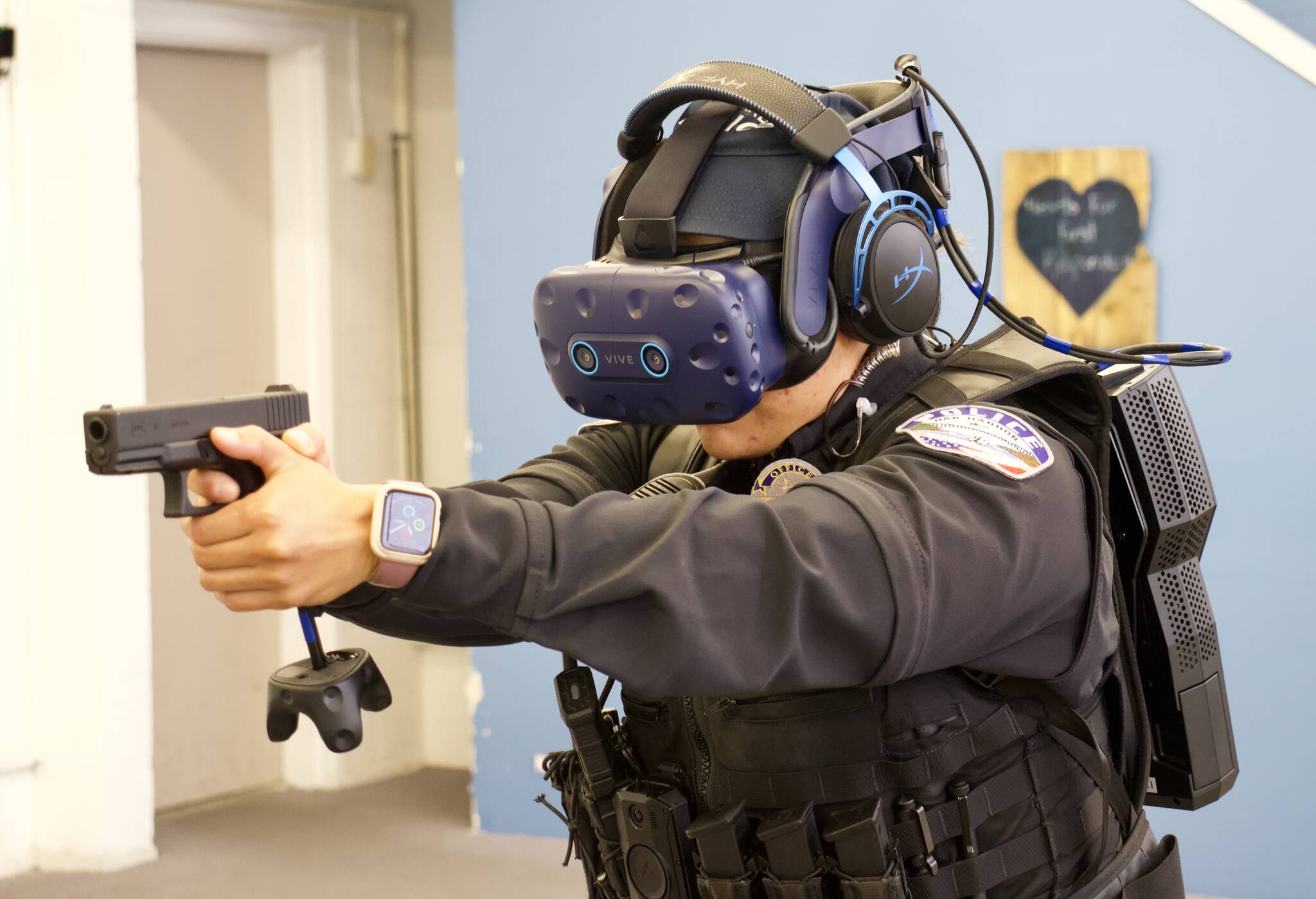In this modern age, many technological advances that once only existed in science fiction have now become a reality – or at least a virtual reality.
Oak Harbor police officers can now don a set of very expensive goggles and be transported to the site of a break-in at a business, or to a grocery store where someone is having a mental health crisis or to a shooting range to practice on moving targets.
This virtual reality, or VR, training program is designed to supplement the training police receive, especially in regards to de-escalation tactics. The city council approved the use of American Rescue Plan Act funds for the purchase of the equipment and software, which is made by a company called Apex. The department purchased two of everything, including the licensing, computers and equipment, which cost just under $70,000. The police training program is not available for commercial sale.
“It helps us not only to train our officers in semi-realistic environments in a safe manner but also, rather than just putting up cardboard cutouts and stuff, here you actually see things that look more realistic,” Police Chief Kevin Dresker said.
For the experience, officers wear a headset connected to a backpack that holds a battery, headphones and a holster with a fake firearm or taser. Once the goggles are on, the trainee is completely immersed in the virtual world. If the training scenario takes place at an apartment complex at night, there is a sky full of stars and residences are all around. The people who live in the VR world – while they still look straight out of a video game – walk right up to the trainees and are the same size as a real person.
Officer Todd Wilson, who leads the training along with Officer Shantel Ricci, speaks to the trainees in the headphones. He acts as the voices for the virtual people in the scenario. This way, officers can practice getting information from a difficult or confrontational suspects. Through the software, he and Ricci also choose how the characters will act, such as drunk or angry. Part of the training helps officers know when to pull out their weapons, as sometimes the VR people will also be carrying one.
There is a large variety of scenarios and locations that trainees can experience in the virtual reality world, all of them written and planned by Wilson and Ricci, often based on situations the department has responded to in real life.
“We can do it here, easier, quicker and more frequent than trying to set up locations and actors,” Dresker said, adding that it can also be used to train the records staff at the department and teach how to de-escalate an angry person who comes into the station.
Capt. Tony Slowik, who is in charge of training at the department, said the biggest learning curve has been for himself, Wilson and Ricci to learn how to operate the system, along with the equipment itself, as they had had no experience in computer programming.
“It takes a little bit of work to get used to it and learn what you can do and not do with the software and the limitations and capabilities of it,” Dresker added, “and then develop scenarios that are good learning, quality scenarios, and how to integrate that with whatever lesson we want to teach our students.”
Desker said the VR training will not replace any more traditional forms of training but is meant to enhance and supplement. For example, he said it does not replace defensive tactics, active shooter training or firearm training.
Virtual reality is especially helpful for de-escalation tactics as there have been changes in state law regarding training requirements.
Slowik said it takes a lot of time to develop the ability to make decisions quickly so officers are not putting themselves or other people in danger. He thinks the VR will be useful in helping develop those skills, as well as teaching officers how to give themselves the time and space to make those vital decisions in times of crisis.
It took the department about a month to learn how to set up the training scenarios after receiving the program and equipment. In about a year, Slowik hopes to be able to add another trainee into the simulator so two officers can be in the VR world at the same time.
While the training scenarios are not a substitute for reality, they are more realistic and nonlinear than what has been taught in the past in traditional classroom environments.
“The hard thing about getting good at a skill is learning it in a very sterile environment versus learning it with stress inputs,” Wilson said. “So the more we can add those stress inputs, the better you’re able to learn those lessons.”



